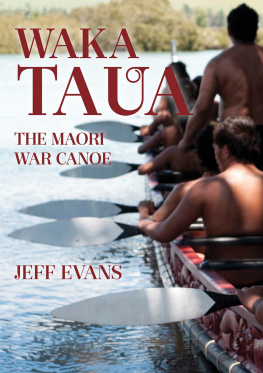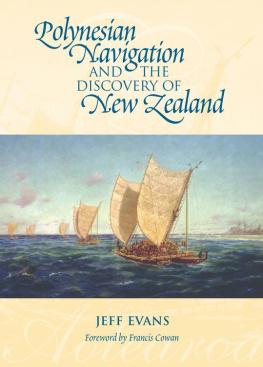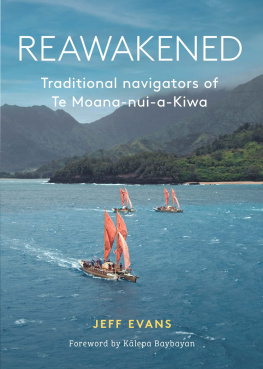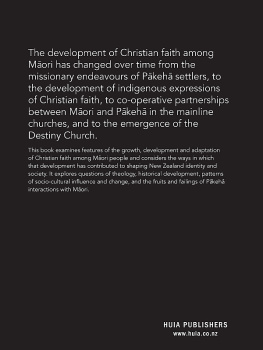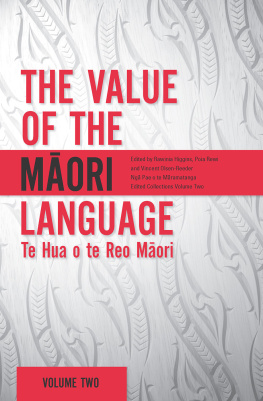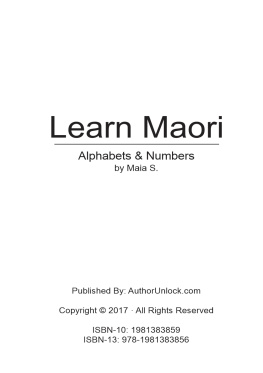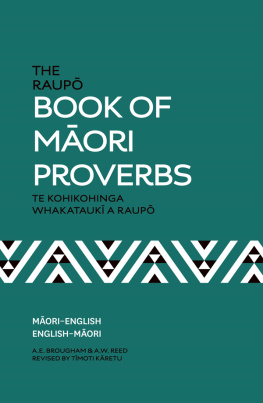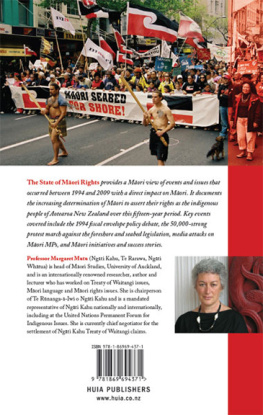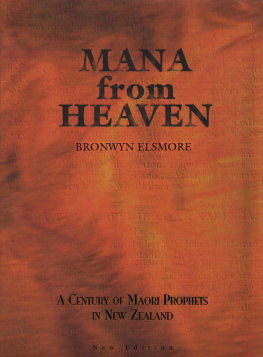Jeff Evans - Waka Taua: The Maori War Canoe
Here you can read online Jeff Evans - Waka Taua: The Maori War Canoe full text of the book (entire story) in english for free. Download pdf and epub, get meaning, cover and reviews about this ebook. year: 2012, publisher: Libro International, genre: Home and family. Description of the work, (preface) as well as reviews are available. Best literature library LitArk.com created for fans of good reading and offers a wide selection of genres:
Romance novel
Science fiction
Adventure
Detective
Science
History
Home and family
Prose
Art
Politics
Computer
Non-fiction
Religion
Business
Children
Humor
Choose a favorite category and find really read worthwhile books. Enjoy immersion in the world of imagination, feel the emotions of the characters or learn something new for yourself, make an fascinating discovery.
- Book:Waka Taua: The Maori War Canoe
- Author:
- Publisher:Libro International
- Genre:
- Year:2012
- Rating:3 / 5
- Favourites:Add to favourites
- Your mark:
- 60
- 1
- 2
- 3
- 4
- 5
Waka Taua: The Maori War Canoe: summary, description and annotation
We offer to read an annotation, description, summary or preface (depends on what the author of the book "Waka Taua: The Maori War Canoe" wrote himself). If you haven't found the necessary information about the book — write in the comments, we will try to find it.
Jeff Evans: author's other books
Who wrote Waka Taua: The Maori War Canoe? Find out the surname, the name of the author of the book and a list of all author's works by series.
Waka Taua: The Maori War Canoe — read online for free the complete book (whole text) full work
Below is the text of the book, divided by pages. System saving the place of the last page read, allows you to conveniently read the book "Waka Taua: The Maori War Canoe" online for free, without having to search again every time where you left off. Put a bookmark, and you can go to the page where you finished reading at any time.
Font size:
Interval:
Bookmark:
THE MAORI WAR CANOE
F irstly, I would like to acknowledge the co-operation of the Turangawaewae Marae Committee, which generously allowed me to use photos taken during the 1999 Turangawaewae Regatta within this book.
Special thanks also to Dr Roger Neich of the Auckland Museum for help and advice during the early stages of writing the book, and to Robin Reed for sharing his vast knowledge of the northern waka taua Ngatokimatawhaorua.
W akaTaua is an introduction to the construction and use of the Maori war canoe, the waka taua. It focuses on time-honoured building techniques and knowledge passed down from one generation to the next, and supplements this traditional information with descriptions and narratives from the diaries and letters of early visitors, settlers and ethnographers, along with paintings and sketches from both professional and amateur artists. There are variations to the general information offered within these pages some tribes preferred original styles of carving and design, for example, and I dont profess to have covered every regional difference. Yet a review covering anything but the more obvious variations is perhaps best left for a more scholarly text.
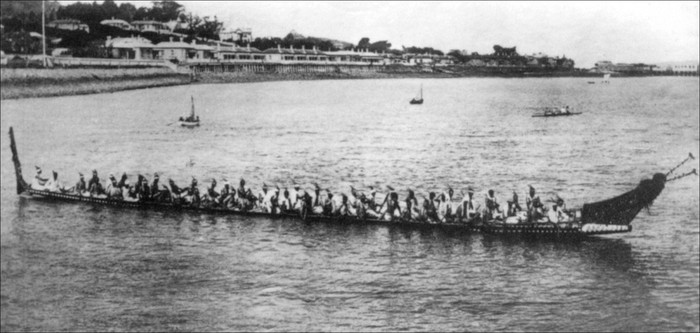
The war canoe Taheretikitiki at Devonport, Auckland, ca. 1890. (A UCKLAND M USEUM /T E P APA W HAKAHIKU )
My own introduction to waka taua was probably typical of many New Zealanders. The first waka taua I saw was during a family visit to Auckland Museum. The magnificent waka TeToki-a-Tapiri seemed to dominate the Maori court, its impressive size exaggerated further in the eyes of a young boy. Then, in my late teens, I glimpsed a waka on the Waikato River just north of Hamilton the crew was doubtless training for one of the annual Ngaruawahia Festival races. I saw the canoe for no more than ten seconds, but the sight of the paddle blades flashing in unison, the water churning behind every paddle and the foam path behind the waka has stayed with me ever since.
The next time I saw a waka taua was at the sesquicentennial celebration of the Treaty of Waitangi in the Bay of Islands, in 1990. Nineteen impressive waka were built for these celebrations. The sight of so many waka on the water together at Waitangi was awe-inspiring even for those watching the event on television. (Anne Nelsons book WakaMaori has a number of wonderful photos from this event.)
My next encounter with waka taua occurred in early 1998 when I visited master canoe builder Matahi Brightwell in Gisborne. While I was there Matahi took me to Whangara to see the waka taua Nukutaimemeha, which was nearing completion under his expert guidance. At 45 m long, it is probably the largest waka taua ever built, with an imposing hull made by laminating lengths of timber from several totara trees.
The visit to see (and help paint, even if only for a couple of hours) Nukutaimemeha at Whangara was the spur I needed to start finding out more about waka taua.
Once I started my research, it soon became obvious that information on waka taua was dispersed throughout many books and journals, some of them long out of print, some of them just too full of technical detail for the general reader. The more I read, the more I realised that there was a need for an introductory book that gave more information about waka taua than could be found on a museum label or in a general book on Maori culture. So, after numerous false starts and rewrites, here is my offering. I hope you enjoy this book and learn something from it.

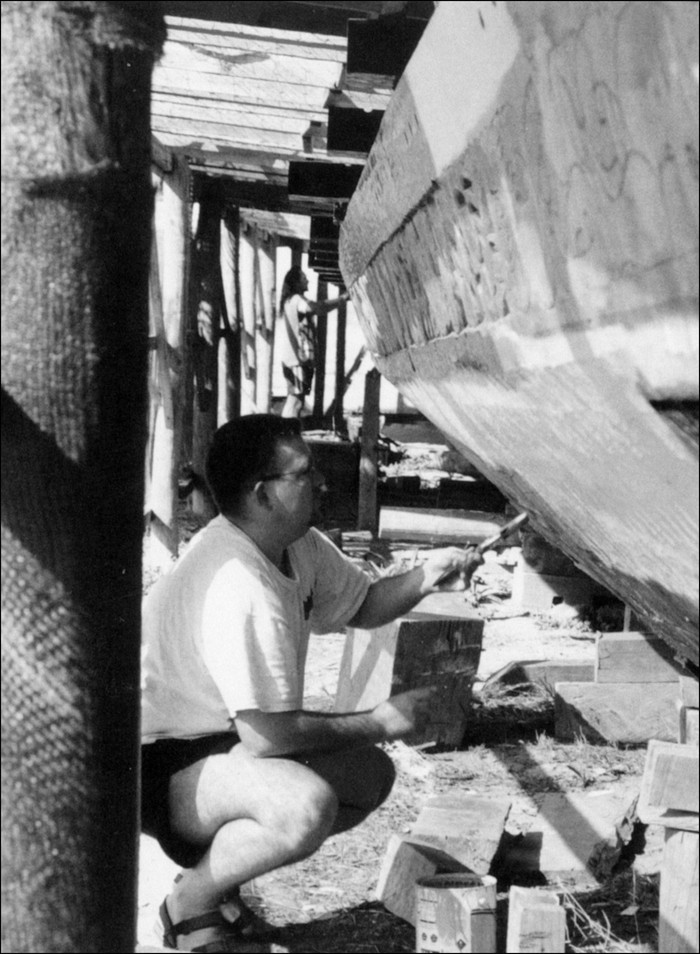
The author helping with work on the mighty waka taua Nukutaimemeha, at Whangara.
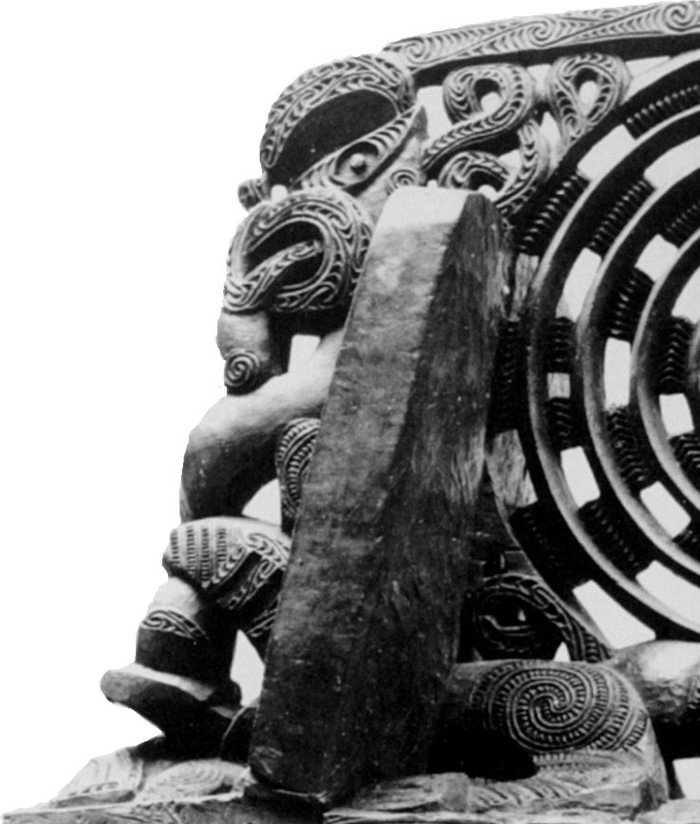
T he sight of a waka taua being paddled at full speed, the crew putting every last ounce of energy into propelling their craft through the water, is truly impressive. How many people watching such a scene have imagined what it must have been like to be part of a crew racing to attack an enemy pa, or felt a shiver up their spine as they imagined being a defender on land waiting for the onslaught? A waka taua in full flight is a sight to make your heart skip a beat power, beauty and death all rolled into one.
The same feeling of awe is experienced when you see a waka taua up close, whether it be beached during Waitangi Day celebrations or at rest in a museum. Of course you have to show respect for the waka and refrain from touching it without permission , yet you can still see the strength, artistry and skill that the canoe builder possessed. The precision of the joinery, the ingenuity of design, the elegance of the hulls lines and the finish of the carving are all cause for admiration, and create a lasting impression.
Traditionally, as in the present day, waka taua were generally owned by the hapu, or sub-tribe, rather than by an individual. Their construction called on the efforts of many people either directly or indirectly, and really united a community. Expert canoe builders, known as tohunga tarai waka, would oversee the project and often complete the more important aspects of the construction themselves; expert carvers were often contracted in from other tribes to do the finishing work; tohunga, or priests, would be called upon to offer prayers at appropriate times in the construction; workmen would need to dedicate themselves to the project for months on end, often miles from the village and their loved ones; kiekie and other fibrous plants would need to be gathered and woven into sails and rope for lashing, often by the women and elderly; raupo would be collected as caulking material (and in some cases for sails), and kokowai and shark-liver oil as ingredients for the paint; villagers would also have to prepare and cook food for the workers in special ovens separate from the village cooking and so on all the while with the usual everyday needs of village life continuing.

Tohungataraiwakawith ahaumisection,an addition to the hull,nearing completion.The photograph wasprobably taken in theTaupoareaduring the1930s.
(F ATHERJ ANB EEK ;A UCKLAND M USEUM /T EP APAW HAKAHIKU )
A large waka taua could take two years or more to complete, from the selection and cutting of the giant totara or kauri tree to be used for the hull, to the whakainu waka, or launching of the waka. All the while, the success of the project depended upon the tribe working together towards the common goal.
Once completed, the canoe was often available for community uses in addition to its main purpose of transporting warriors to and from battle. Only the most important and tapu canoes were reserved purely for war. Some of the less important waka taua were used for social visits, trading, or even fishing once the carved tauihu and taurapa (prow-and stern-pieces) had been removed and stored.
Font size:
Interval:
Bookmark:
Similar books «Waka Taua: The Maori War Canoe»
Look at similar books to Waka Taua: The Maori War Canoe. We have selected literature similar in name and meaning in the hope of providing readers with more options to find new, interesting, not yet read works.
Discussion, reviews of the book Waka Taua: The Maori War Canoe and just readers' own opinions. Leave your comments, write what you think about the work, its meaning or the main characters. Specify what exactly you liked and what you didn't like, and why you think so.

